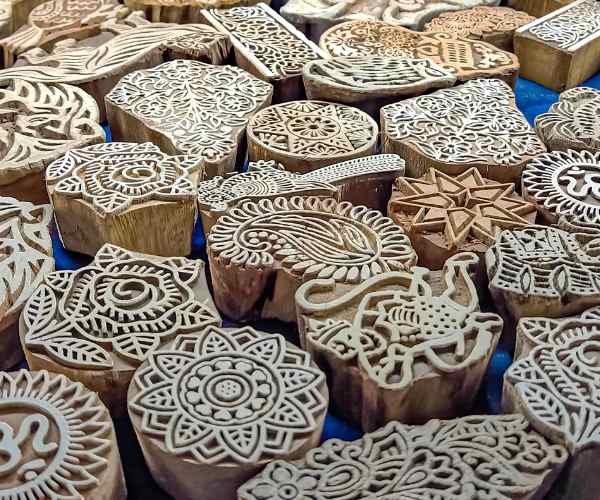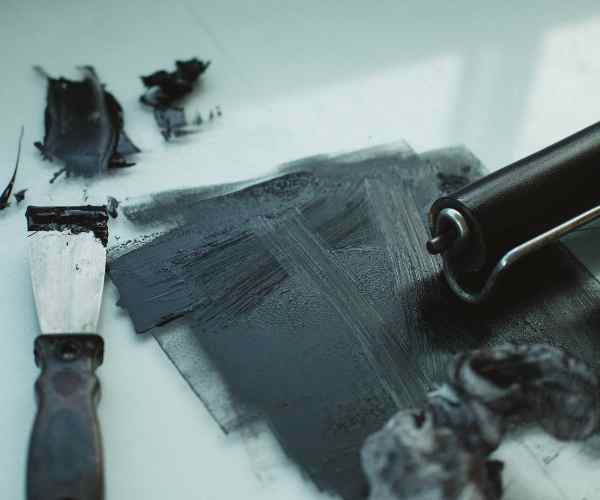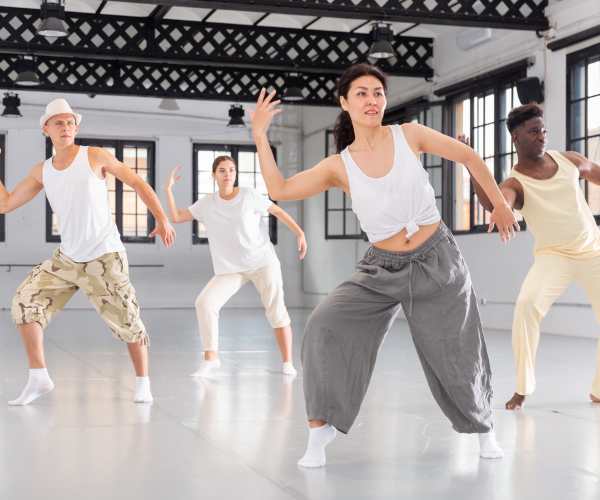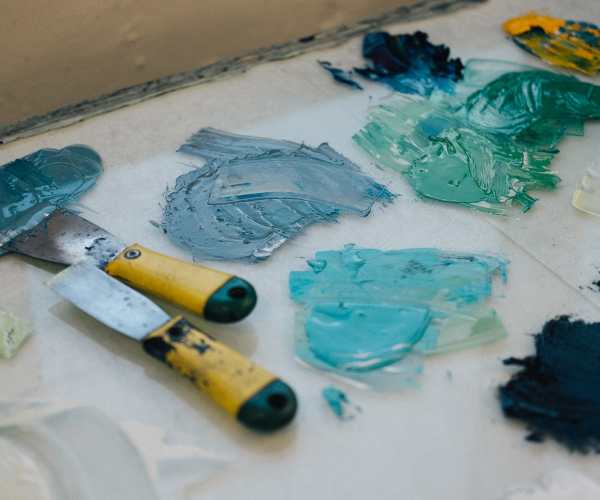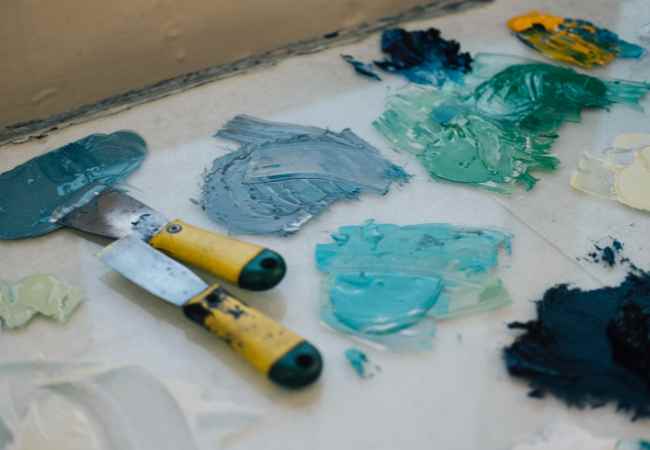I’m so excited to share this journey into the world of printmaking with you.
If you’ve ever picked up a beautifully printed art piece and wondered how it was made, you’re in the right place.
Printmaking is more than just a technique; it’s an art form that opens up a realm of creative possibilities.
I remember the first time I saw a printmaking demo at a local art fair.
The artist was so passionate, and watching the ink transfer from the carved block onto the paper was mesmerizing.
It was like watching magic unfold right before my eyes.
I knew I had to try it myself!
This guide aims to demystify traditional printmaking techniques and inspire you to dive into this creative world.
Whether you’re a seasoned artist or just starting, understanding printmaking can enhance your artistic journey.
So grab your tools, and let’s explore this fascinating art form together!

Exploring traditional printing techniques
What is printmaking?
So, what exactly is printmaking?
At its core, printmaking involves transferring images from a matrix (like a block or plate) onto another surface, typically paper or fabric.
The magic happens when you ink that matrix and press it onto your chosen medium.
But it’s not just about creating a single image; it’s about the process and the stories each print tells.
The beauty of printmaking lies in its versatility.
There are countless techniques you can explore, each with its own unique charm and challenges.
For me, printmaking became a way to connect with my artistic roots and experiment with textures and layers that you simply can’t achieve with painting alone.
The tactile nature of handling materials, the anticipation of pulling a print, and the surprise of the final result make printmaking an exhilarating experience.
Relief Printing
Let’s dive into one of the oldest printmaking techniques: relief printing.
This method has a rich history and is one of the first forms of printmaking developed by ancient civilizations.
Relief printing involves carving a design into a surface, usually a block of wood or linoleum.
The raised areas of the block take the ink, while the recessed parts remain ink-free, allowing for unique images to emerge with each print.
Imagine standing at a workbench, tools in hand, carving away at a piece of linoleum.
The rhythmic sound of your tools working through the material can be incredibly therapeutic.
You might start with something simple, like a geometric design, and then, as you gain confidence, progress to more intricate patterns.
Two common methods of relief printing are woodcut and linocut.
Woodcut is the older of the two, dating back to ancient China, while Linocut is a more modern technique that uses softer linoleum, making it easier for beginners to carve.
Real-life example:
Let’s talk about Albrecht Dürer, a master of the woodcut technique.
His iconic works showcase the intricacies of woodcut prints, often depicting detailed landscapes and expressive figures.
When you look closely at his prints, you can see how the textures created by his carving technique add depth and life to the images.
I once attempted a linocut inspired by Dürer’s work, and let me tell you, the first time I pulled the print and saw that image emerge, I felt a rush of excitement.
It’s an incredible feeling to realize that you can create something so unique with your own hands.
As we explore relief printing and other techniques in this guide, I hope you feel inspired to pick up your tools and try it out for yourself!
Intaglio Printing
Ah, intaglio printing—what a fascinating technique!
Intaglio comes from the Italian word “intagliare,” which means to incise or carve.
In this method, artists incise a design into a metal plate, and it’s the grooves that hold the ink.
When you run the plate through a press, the paper is pushed into those incised lines, capturing the detail and creating a beautiful image.
There are a few techniques within intaglio that are worth exploring: etching, engraving, and drypoint.
- Etching involves using acid to bite into the plate, creating fine lines and intricate details.
- Engraving is done by directly carving the design into the plate with a burin, resulting in very clean lines.
- Drypoint, on the other hand, uses a needle or another sharp object to scratch the design into the plate, producing a soft, rich line that can give your prints a unique texture.
I vividly remember the first time I tried etching.
The whole process felt a bit like a science experiment!
After preparing my plate, I carefully applied the ground (a waxy substance) to protect the areas I didn’t want to etch.
Once I had my design drawn on, I dropped the plate into the acid bath.
When I lifted it out, I was so nervous to see how it turned out.
It was exhilarating to ink it up and run it through the press, finally revealing my print.
Each piece I pulled had a slightly different character, and I fell in love with the unpredictability of it.
A master of this technique is, of course, Rembrandt.
His prints are a testament to the possibilities of intaglio, filled with rich textures and deep contrasts that tell a story all their own.
Lithography
Next up is lithography, a technique that’s as fascinating as it is unique.
Lithography is based on a simple yet profound principle: oil and water do not mix.
Using this principle, artists draw on a flat stone or metal plate with a greasy medium—often a crayon or liquid.
Then, when it comes time to print, the artist applies ink to the plate.
The ink sticks to the greasy areas but not to the wet parts, allowing for the creation of detailed images.
I remember my first experience with lithography.
It was during a workshop, and I was skeptical at first.
How could a drawing on a stone become a print?
But when I saw the process unfold, it was like a light bulb went off in my mind.
I loved how I could draw freely, and the ability to create multiple prints from the same design felt like a secret power!
This technique allows for a wonderful range of expressiveness, which is why artists like Henri de Toulouse-Lautrec thrived in it.
His lithographs are legendary for capturing the vibrant, electric atmosphere of Parisian nightlife with bold colors and striking imagery.
Screen Printing
Now, let’s talk about screen printing, or silkscreen printing.
This technique uses a fine mesh to transfer ink onto a substrate, which can be paper, fabric, or other materials.
Screen printing is incredibly versatile and has found a home in various fields, from fashion to advertising.
One of the reasons I love screen printing is how accessible it is for beginners.
You can create stunning prints with minimal equipment and a bit of creativity.
In fact, my first foray into printmaking was with screen printing.
A friend and I decided to create our own T-shirts for a local art festival.
We made a simple stencil, set up a makeshift screen in her garage, and started printing.
The thrill of seeing our designs come to life on fabric was unforgettable!
It’s a technique that encourages experimentation, and I still find myself returning to it time and again.
Andy Warhol took screen printing to another level, revolutionizing the art world with his colorful, bold works.
He blended art and commercialism in a way that still resonates today, reminding us that printmaking can be both an art form and a vehicle for social commentary.
Tips for Getting Started with Printmaking
So, you’re ready to dive into the world of printmaking?
Here are some tips to help you get started:
- Choose Your Technique: Start by exploring different printmaking techniques and see which resonates with you. Each has its own unique charm, so pick one that aligns with your interests and available resources.
- Invest in Quality Materials: While it might be tempting to skimp on materials, investing in quality supplies can make a world of difference. Good inks, papers, and tools will enhance your results and keep you motivated to create.
- Practice Regularly: Like any skill, printmaking requires practice. Don’t be discouraged by early mistakes. Embrace them as part of the learning process and continue to experiment with new designs and techniques.
- Don’t Be Afraid to Experiment: Printmaking is all about creativity! Mix techniques, try out different inks, or explore various surfaces. The more you experiment, the more you’ll discover your own unique style.
I encourage you to explore this exciting art form with an open heart and mind.
FAQs
What materials do I need to start printmaking?
So, you’re eager to start printmaking—exciting times ahead!
When it comes to materials, the essentials can vary a bit depending on the technique you choose, but there are some basic items that every printmaker should have in their toolkit.
- Printing Press: While not mandatory for every technique, a printing press can make the process smoother, especially for techniques like intaglio and lithography. If you’re just starting out, you might want to look into alternatives like a baren or even a homemade press!
- Inks: You’ll need high-quality inks suitable for your chosen technique. For example, oil-based inks work well for intaglio, while water-based inks are great for screen printing.
- Paper: The right paper can make a significant difference in your prints. Look for printmaking papers that are durable and can absorb ink well. Many artists love cotton rag paper for its texture and strength.
- Tools: Depending on the technique, you’ll need different tools. For relief printing, you might need carving tools. For intaglio, an etching needle or burin is essential. A squeegee is a must-have for screen printing.
When I first started, I was amazed at how just a few simple tools could lead to such beautiful creations.
I remember scouring local art supply stores, excitedly picking out my first set of inks and paper.
It felt like I was gathering treasures for a new adventure!
Is printmaking expensive?
Ah, the age-old question of cost!
Let me put your mind at ease: printmaking can be as affordable or as expensive as you want it to be.
Sure, there are initial costs—especially if you’re investing in a good printing press or high-quality materials.
However, many techniques can be done on a budget.
For instance, relief printing can be started with just some linoleum blocks, a carving tool, and a brayer.
You might even have some scrap paper lying around that you can use!
I remember starting with basic materials and working in a small corner of my apartment.
I had a little tabletop press and made prints with simple tools.
It was liberating to create art without breaking the bank!
Plus, as you get more into it, you can gradually invest in higher-end materials or equipment as your skills develop.
Can I learn printmaking on my own?
Absolutely!
One of the best things about printmaking is that it’s a highly accessible art form.
You don’t need a fancy art school or formal training to get started.
There are countless online resources, tutorials, and videos available that can guide you through the process step-by-step.
I’ve learned so much from watching YouTube tutorials and reading articles from experienced printmakers.
Additionally, local art centers or community colleges often offer classes where you can learn from professionals and connect with other budding artists.
I remember my first printmaking class—it was an eye-opening experience.
Being in a space with other passionate artists, sharing ideas and techniques, really fueled my love for this craft.
The key is to dive in and try things out!
With the wealth of information available today, you’ll find that learning printmaking can be a fun and fulfilling journey.
Conclusion
In conclusion, A Beginner’s Guide to Traditional Printmaking Techniques opens the door to a world of creative possibilities.
Each technique offers its own unique charm and set of challenges, inviting artists to express themselves in ways that are truly personal.
Printmaking isn’t just about creating beautiful images; it’s about the entire process—the thrill of inking a plate, the anticipation as you lift the paper, and the joy of seeing your vision come to life.
So, dive in!
Explore the different techniques, experiment with materials, and most importantly, let your creativity flow.
Printmaking can be a deeply rewarding practice, and I can’t wait for you to experience the joy it brings.
Trust me, once you start, you’ll find it hard to stop!

